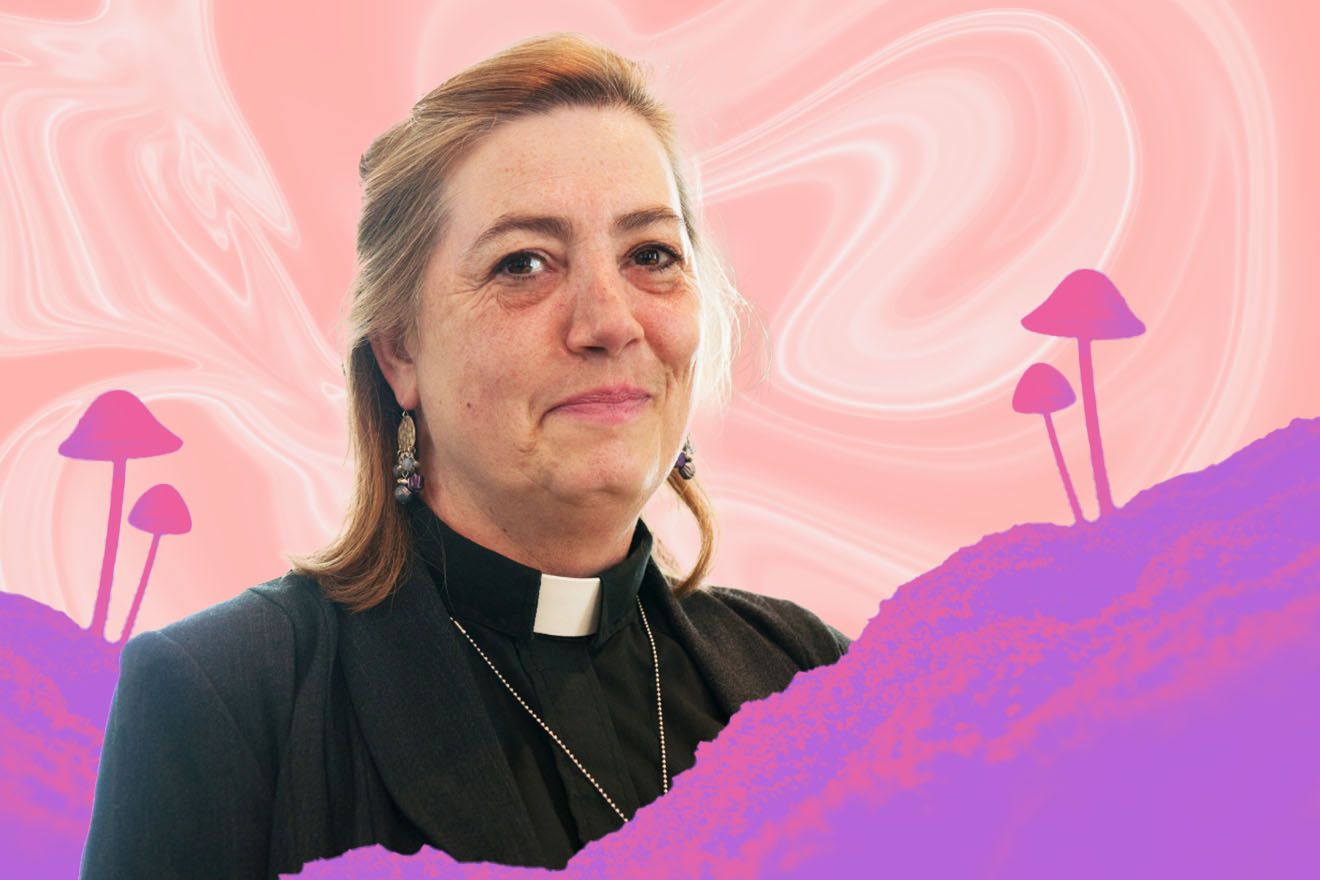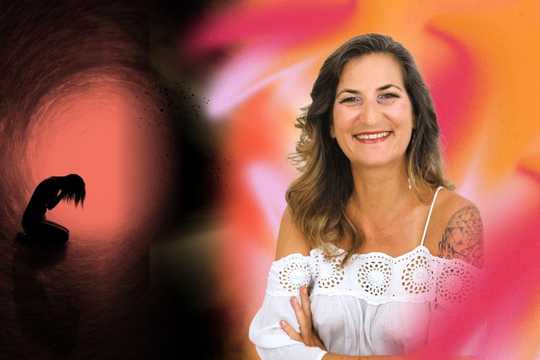Psychedelics and organized religion may seem like unlikely allies, but the two have been intertwined for centuries. Today, psychedelic clergy have a unique and vital role in helping patients integrate mystical experiences. Learn about the ancient and modern role of psychedelic clergy.
As we’re assembling the psychedelic co-therapy team, some team members may seem obvious. Physicians will help prescribe. Therapists will help with integration, and nurses will uphold patient safety. But is there a space for clergy within psychedelic medicine? We think so.
We’re bridging medicine and mysticism in building a new paradigm for psychedelic therapy. Experiential medicine will require collaboration between medical and integrative clinicians. We’ll need all hands on deck to ensure patient access and quality care for all.
Psychedelic Support is excited for professionals from all walks of life to contribute to the growing psychedelic movement. And clergy come from a long history of fostering psychedelic mysticism. Religious leaders have helped people gain deeper spiritual understandings through psychedelics for millennia. Let’s talk about the ancient and modern role of psychedelic clergy.
Follow your Curiosity
Sign up to receive our free psychedelic courses, 45 page eBook, and special offers delivered to your inbox.Organized Religion and Psychedelics
“Psychedelic clergy” may sound like a paradoxical term or the setup for a joke. Mainstream western religion seems to make no mention of psychedelic experiences. Yet psychedelics have been used as a tool in religion for quite some time. Western culture only discovered psychedelics through the generosity of native cultures.
Native Americans have used peyote in mystical religious sacraments for thousands of years [1]. Some reports show that peyote has been used in religious ceremonies since 1000 BC [2]. Today, many Native Americans still use peyote as a spiritual tool for healing. By expanding consciousness, peyote helps foster health, respect, and community within native American religions [1]. The use of spiritual healing doesn’t stop at peyote – other cultures have also used psychedelics.
South American cultures have used psilocybin to access spiritual realms for thousands of years. Aztec Indians held so much meaning for the mushrooms – they called them “god’s flesh.” In the 1500s, Spanish missionaries attempted to destroy evidence and records of psilocybin mushrooms. Yet their importance and use remained [3].
Some scholars even argue that psychedelics are mentioned in the Old and New Testament. Manna, Showbread, and Holy Ointment may be mentioned as psychoactive substances. Ancient Israelites may have used entheogenic substances to commune with their God, as other religions have [4].
Psychedelic Mysticism and Religion: Opposing or Collaborating?
In many western cultures, religion and mysticism may seem like opposing ideas. Literal biblical interpretations seem to leave little room for psychedelics. Yet psychedelic experiences could give patients the chance to experience and understand spirituality on a deeper level.
Psychedelic experiences and mystical states are closely linked. Like religious experiences, psychedelic sessions are often deeply profound, meaningful, and life-changing. Some scholars even argue that the link between spiritualism and psychedelic experiences is incontrovertible [5]. Yet large religious bodies have not acknowledged psychedelics as a spiritual tool.
Some psychedelic scholars compare this to seventeenth-century theologians’ refusal to look through Galileo’s telescope. Religious leaders preferred the idea that the Earth stood at the center of the universe and knew that confronting this fact could lead to significant changes in the church. The intersection of religion and natural phenomena, like our solar system and psilocybin, is historically fraught with fear and denial [6].
Psychedelic scholars also struggle with the link between these substances and mysticism. Some argue that the spiritual experiences of psychedelics should be separated from their therapeutic benefits. Yet research participants tend to associate strong spiritual experiences with better mental health benefits. Many people describe their psychedelic experiences as “among the most personally meaningful and spiritually significant experiences of their lives.”[7]
In research, psychedelics have shown to be helpful for a range of diagnoses. Unlike medications, which are often diagnosis-specific, psychedelics have a range of proven applications, from PTSD to depression. Some scholars believe this “transdiagnostic mechanism” can be attributed to spiritual experiences [6]. Psychedelics’ spiritual effects may explain why they’ve been helpful for so many different people.
Psychedelic clergy can stand at the intersection of medicine and mysticism to foster new understandings. They can help large religious organizations understand psychedelics, not as vices but as tools. By bridging the medical and mystical, psychedelic clergy can be leaders in bringing psychedelic therapy to congregations and communities. As religious leaders, the clergy has the ability to re-frame psychedelics in the context of western religion.
The Role of Psychedelic Clergy
Psychedelic clergy are posed to help patients experience deeper integration within the context of spiritualism and religion. The overlap between psychedelics and spirituality means that clergy will be vital tools in helping patients understand their emotions following psychedelic therapy.
Many people describe their psychedelic experiences as mystical encounters with an “ultimate reality.” These experiences create vivid memories and can involve communication with a sacred being. In one study, more than two-thirds of users who identified as atheists before their session no longer identified as that afterward [8]. Clergy will help these patients to clarify their new spiritual understandings after psychedelic experiences.
Clergy can be especially helpful for patients who come to psychedelic therapy from a religious background. Patients who look to psychedelic therapy as a religious tool will consult clergy for guidance and clarity. Clergy will help patients understand and integrate their mystical psychedelic experiences within the broader context of their religion or spirituality.
Clergy and chaplains may be especially important in helping patients with end-of-life anxiety and depression. This patient population already leans on hospital and hospice chaplains for spiritual support and counseling. Psilocybin and MDMA may soon be used to alleviate stress for these patients, and psychedelic clergy will assist in spiritual integration.
Because of legal roadblocks, many of these roles may seem theoretical. We’re hoping for federal legalization in the next few years, but some areas are already improving access. Patients in Oregon will soon be able to access psilocybin for self-exploration, and we hope that clergy will help with spiritual integration as people gain access. In Canada, doctors will soon be able to request access to psychedelics on behalf of their patients.
Some researchers are already exploring the intersection of psychedelics and religion. In 2015, NYU’s Langone Health began research exploring religious leaders’ experiences of psilocybin. They hypothesized that clergy could make more nuanced descriptions of their experiences and contribute to a better understanding of mysticism within psychedelic therapy [9]. Research combining clergy and psychedelics will shed new light on this relationship.
Psychedelic Clergy and the Co-Therapy Team
Psychedelic clergy will help patients gain spiritual understanding during and after their experiences. We hope clergy members will enthusiastically join the psychedelic medicine movement and contribute to patient access and integration. Alongside other members of the Co-Therapy team, clergy can help patients experience new levels of spiritual understanding.
Psychedelic medicine will need an interdisciplinary team to deliver cutting-edge psychedelic therapy to patients. We can’t do it alone. You can be a part of a team of clinicians offering proven treatments for PTSD, depression, anxiety, and more. If you’re a clergy member, nurse, doctor, or therapist, we encourage you to join our professional network.
Are you interested in offering psychedelic therapy and integration? We recommend the Integrative Psychiatry Institute’s year long certificate training program. The program is fully online and taught by experts in psychedelic medicine. Next cohort starts in July 2022. Schedule a call to reserve your spot!
References:
- Jones, P. N. (2007). The Native American Church, Peyote, and Health: Expanding Consciousness for healing purposes. Contemporary Justice Review, 10(4), 411–425. https://doi.org/10.1080/10282580701677477
- Wexler, P. (2014). Peyote. In Encyclopedia of toxicology. essay, Elsevier, Academic Press.
- Nichols, D. E. (2020). Psilocybin: From ancient magic to modern medicine. The Journal of Antibiotics, 73(10), 679–686. https://doi.org/10.1038/s41429-020-0311-8
- Nemu, D. (2019). Getting high with the most high: Entheogens in the old testament. Journal of Psychedelic Studies, 3(2), 117–132. https://doi.org/10.1556/2054.2019.004
- Smith, H. (1964). Do Drugs Have Religious Import? The Journal of Philosophy, 61(18), 517–530. https://doi.org/10.2307/2023494
- Cole-Turner, R. (2022). Psychedelic mystical experience: A new agenda for theology. Religions, 13(5), 385. https://doi.org/10.3390/rel13050385
- Agin-Liebes, Gabrielle I., Tara Malone, Matthew M. Yalch, Sarah E. Mennenga, K. Linnae Ponté, Jeffrey Guss, Anthony P. Bossis, Jim Grigsby, Stacy Fischer, and Stephen Ross. 2020. Long-Term Follow-up of Psilocybin-Assisted Psychotherapy for Psychiatric and Existential Distress in Patients with Life-Threatening Cancer. Journal of Psychopharmacology 34: 155–66.
- Griffiths, R. R., Hurwitz, E. S., Davis, A. K., Johnson, M. W., & Jesse, R. (2019). Survey of subjective “God encounter experiences”: Comparisons among naturally occurring experiences and those occasioned by the classic psychedelics psilocybin, LSD, ayahuasca, or DMT. PloS one, 14(4), e0214377. https://doi.org/10.1371/journal.pone.0214377
- The effects of psilocybin-facilitated experience on the psychology and effectiveness of religious professionals – full text view. Full Text View – ClinicalTrials.gov. (n.d.). Retrieved June 1, 2022, from https://clinicaltrials.gov/ct2/show/NCT02421263






